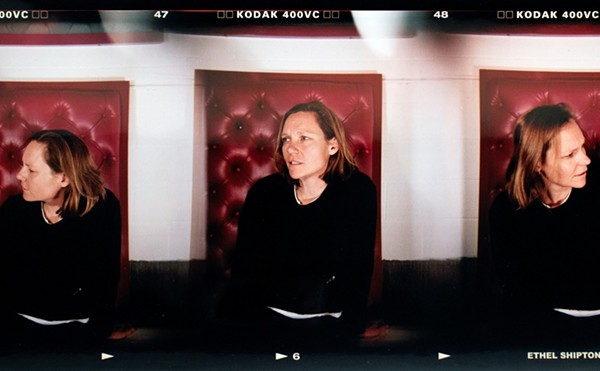A newly updated version of West Side Story waltzes—or rather, mambos!—into the Majestic, with some startling revisions to what may be regarded (in iPad terms) as “the look and feel” of this cornerstone of American musical theater. Gone are the day-glo hues of the original ’50s production and film; in their stead are gritty, urban sets by James Youmans, with muted vests and denim designed by David C. Woolard. The Puerto Rican Sharks—a rough’n’tumble street gang—now slide naturally and frequently into Spanish, while the rival Jets make liberal use of the most eloquent of gestures: the middle finger. “Gee, Officer Krupke”—a musical-comedy evisceration of behavioral science—now features all manner of crude pantomime, including a spectacularly crass imitation of masturbation. (On opening night, “Officer Krupke” actually compelled a couple of audience members to walk out. Keep up the good work, Broadway Across America – and I mean that sincerely.) If a down’n’dirty West Side Story is your cup of tea, then get yourself to Houston Street.
But while you may come for the simulated ejaculation, you’ll stay for the dancing; for all of the much-ballyhooed changes to script and staging (by original scribe Arthur Laurents, restaged by David Saint), this production is still driven—like the original—by Jerome Robbins’ astounding choreography, which tells the story with such energy, verve, and brilliance that you’re sort of sorry when the book scenes start again. (The famous “Dance at the Gym,” which morphs from whirling mambo to austere ballet, is simply sublime.) Ditto for the kinetic, jazzy “Cool,” the utopian “Somewhere,” the Latin-tinged “America”—well, ditto for everything terpsichorean. The dance sequences simply can’t be matched.
Thus the choreography—and Sondheim’s lyrics and Bernstein’s score—pretty much carries the day: the large cast is generally stronger at the dancing than the singing, though much of the heavy vocal lifting is done by star-crossed lovers Tony (understudy Cary Tedder) and Maria (Ali Ewoldt), both fine in their admittedly one-dimensional roles. (To be frank, as written, Tony's about as scintillating as plankton. What exactly does Maria see in him? Give me Bernardo any day!) Michelle Aravena’s Anita always lights up the stage, while Joseph Simeone’s Riff seems a bit ruff. The West Side Story orchestra is listed only as keyboards, drums, and trumpet, but--as friendly posters have corrected me (as below)--this core combo was filled out by sixteen uncredited local musicians, including violins.
But back to the dancing. Yes, much of it’s preserved on celluloid—in the 1961 film version—but that's nothing like the experience of seeing it on stage. And viewing the choreography in a single pass—rather than sliced up on e.g. YouTube—allows the audience to see how cleverly Robbins manipulates the visual language of the piece, as the jerky motions and ragged (a)symmetries of the violent first act are tamed, mastered, and transformed into the ethereal dream sequence of the second act. If the end of West Side Story still seems abrupt, that’s largely the fault of Laurents’ book, not the production per se.
In sum: any chance to see Robbins’ original dances performed with an accomplished cast is cause for celebration. There may be a few metaphorical missteps in the current touring production, but where it counts—the dancing—the steps couldn’t be more expert, or more sure.
--Thomas "Mambo" Jenkins, Current theater critic.
















